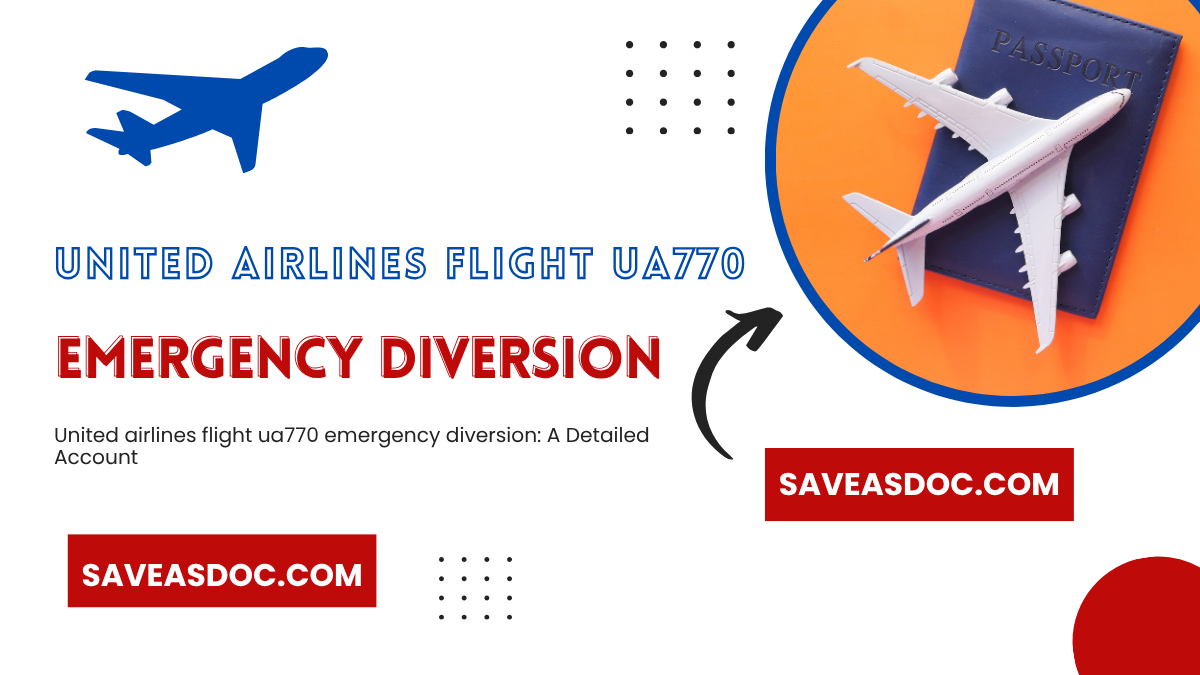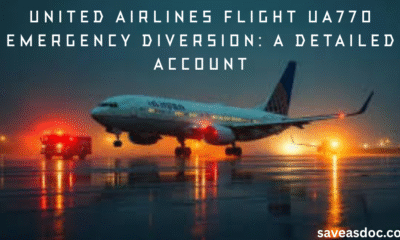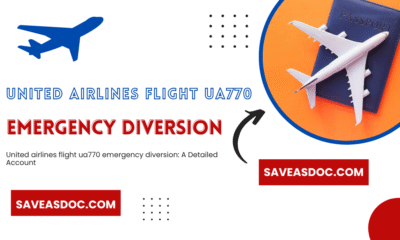Travels
Emergency Landing: Navigating Aviation’s Critical Moments

In the realm of aviation, an emergency landing stands as a critical maneuver, executed when unforeseen circumstances jeopardize the safety of a flight. Such landings, though rare, demand precise coordination, swift decision-making, and adherence to established protocols to ensure the well-being of all on board. This article delves into the intricacies of emergency landings, exploring their causes, procedures, and the technological advancements that aid in their successful execution.
Understanding Emergency Landings
An emergency landing occurs when an aircraft is compelled to land due to an in-flight crisis that renders continued flight unsafe or impossible. These situations can arise from various factors, including mechanical failures, medical emergencies, adverse weather conditions, or security threats. The primary objective in such scenarios is to bring the aircraft to the ground safely, minimizing potential harm to passengers and crew.
Types of Emergency Landings
Emergency landings are categorized based on the urgency and nature of the situation:
-
Precautionary Landing: Executed when a potential issue is identified, but an immediate threat is not present. Pilots choose to land at the nearest suitable airport to address the concern before it escalates.
-
Forced Landing: Occurs when an aircraft must land promptly due to a critical failure, such as engine malfunction. In such cases, pilots may need to land in areas other than designated runways, including open fields or highways.
-
Ditching: A specific type of forced landing where the aircraft lands on water. This is typically a last resort when no viable land options are available.
Common Causes Leading to Emergency Landings
Several factors can necessitate an emergency landing:
-
Mechanical Failures: Malfunctions in critical systems, such as engines, hydraulics, or landing gear, can compromise flight safety.
-
Medical Emergencies: Severe health issues affecting passengers or crew may require immediate diversion to the nearest airport equipped to handle medical situations.
-
Weather-Related Issues: Unexpected severe weather, including thunderstorms, turbulence, or icing, can make continued flight hazardous.
-
Bird Strikes: Collisions with birds can damage aircraft components, particularly engines, leading to potential failures.
-
Fuel Emergencies: Miscalculations, leaks, or unforeseen delays can result in insufficient fuel, prompting an urgent landing.
Procedures During an Emergency Landing
When faced with an emergency, pilots follow a structured protocol to manage the situation effectively:
-
Assessment and Decision-Making: Pilots assess the nature and severity of the emergency, considering factors such as aircraft performance, weather conditions, and available landing sites.
-
Communication: Informing air traffic control (ATC) is crucial. Pilots declare an emergency, providing details about the situation and intentions, enabling ATC to offer assistance and prioritize the aircraft’s landing.
-
Preparation: The crew prepares the aircraft and passengers for landing. This includes briefing passengers, securing the cabin, and configuring the aircraft for the specific type of landing required.
-
Execution: Pilots execute the landing, utilizing their training to manage the aircraft under the given circumstances, whether it’s a standard runway approach or an off-airport landing.
-
Post-Landing Actions: After landing, ensuring the safety of all on board is paramount. Evacuation procedures may be initiated if necessary, and emergency services are engaged to assist.
Technological Advancements Enhancing Emergency Landings
Modern aviation benefits from technological innovations that aid in managing emergencies:
-
Enhanced Ground Proximity Warning Systems (EGPWS): These systems alert pilots to potential terrain conflicts, reducing the risk of controlled flight into terrain during emergency descents.
-
Automatic Dependent Surveillance-Broadcast (ADS-B): Provides real-time aircraft position data to ATC and other aircraft, improving situational awareness during emergencies.
-
Fly-by-Wire Systems: Computerized flight control systems that assist pilots in maintaining control during critical situations, enhancing aircraft stability and response.
-
Engine Health Monitoring Systems: Continuously monitor engine performance, detecting anomalies early to prevent in-flight failures.
Training and Simulation
Pilots undergo rigorous training to handle emergency situations. Simulators replicate various emergency scenarios, allowing pilots to practice responses in a controlled environment. This training encompasses:
-
Engine Failures: Managing single or multiple engine outages and executing appropriate landing procedures.
-
Cabin Depressurization: Responding to sudden loss of cabin pressure, including emergency descents and passenger management.
-
Avionics Failures: Navigating and controlling the aircraft with partial or complete loss of electronic systems.
Passenger Preparedness and Safety
Passenger awareness and cooperation are vital during emergency situations. Airlines provide safety briefings and materials to educate passengers on emergency procedures. Key aspects include:
-
Understanding Safety Briefings: Paying attention to pre-flight safety demonstrations equips passengers with knowledge to act appropriately during emergencies.
-
Locating Exits: Familiarity with the nearest exits and alternative routes enhances evacuation efficiency.
-
Appropriate Behavior: Remaining calm, following crew instructions, and avoiding actions that could impede safety procedures are essential.
Case Studies of Notable Emergency Landings
Examining past incidents provides valuable insights into effective emergency management:
-
US Airways Flight 1549 (2009): After a bird strike disabled both engines, Captain Chesley “Sully” Sullenberger executed a successful ditching in the Hudson River, with all passengers surviving.
-
Air Canada Flight 143 (1983): Known as the “Gimli Glider,” this flight experienced fuel exhaustion due to a miscalculation. The crew glided the aircraft to a safe landing on a decommissioned airstrip.
-
British Airways Flight 38 (2008): A fuel system malfunction led to engine failure on final approach. The crew managed a crash landing just short of the runway, with no fatalities.
Conclusion
Emergency landings, while challenging, are integral to aviation safety. Through comprehensive training, technological support, and adherence to established procedures, pilots and crew are equipped to manage such situations effectively. Continuous advancements in aviation technology and safety protocols further enhance the industry’s ability to handle emergencies, ensuring passenger and crew safety remains paramount.
Travels
Budget Travel Tips for Students:Unlocking Adventures Without Breaking the Bank

Affordable Travel Hacks Every Student Should Know
For many young travelers, student life offers the perfect window to explore the world but limited funds can make it challenging. The good news? With the right strategies, you can enjoy enriching travel experiences without breaking the bank. In this article, we’ll share updated and practical budget travel tips for students that will help you save money, stay safe, and make the most of every trip.
Why Students Benefit from Budget Travel
Traveling on a budget isn’t just about spending less it’s about maximizing value. For students, it’s a chance to:
-
Gain cultural exposure and global awareness.
-
Learn resourcefulness and adaptability.
-
Build lifelong memories without long-term debt.
Budget friendly travel also teaches financial responsibility, making it a life skill you’ll carry beyond university years.
1. Start With Smart Planning
Planning ahead is one of the most effective budget travel tips for students. Booking last minute often costs more, so research and reserve flights, accommodation, and activities early.
Use Flight Comparison Tools
Websites like Skyscanner, Google Flights, and Kayak help track prices. Turn on fare alerts so you’re notified when ticket costs drop.
Be Flexible With Dates
Travel midweek or during off peak seasons. For example, visiting Europe in early spring or autumn is often cheaper than summer.
2. Cut Accommodation Costs
Where you stay can greatly impact your budget, but there are affordable options that still offer comfort and safety.
Hostels and Budget Hotels
Hostels are great for meeting other travelers while keeping costs low. Many now offer private rooms for those who prefer privacy.
Couchsurfing and Student Networks
Platforms like Couchsurfing connect you with locals willing to host travelers for free. Student networks and exchange programs can also help you find safe, low cost stays.
3. Travel Light to Save Money
Baggage fees can quickly add up, especially on budget airlines.
Stick to Carry On
Choose versatile clothing and essentials you can mix and match. A lighter bag means no checked luggage fees and easier mobility.
4. Eat Well Without Overspending
Food is a major part of the travel experience, but eating at tourist spots can drain your wallet.
Dine Like a Local
Street food, local cafes, and open air markets often serve authentic, affordable meals. You’ll enjoy cultural flavors without the high price tag.
Cook When Possible
If your accommodation offers kitchen access, cook a few meals yourself. Even preparing breakfast daily can lead to big savings over time.
5. Use Your Student Perks
One of the biggest advantages of traveling as a student is access to exclusive discounts.
Get an ISIC Card
The International Student Identity Card provides discounts on transport, attractions, and even some restaurants worldwide.
Carry Your Student ID Everywhere
Many museums, theaters, and tourist attractions offer reduced entry fees if you can prove student status.
6. Save on Transportation
Transportation costs can add up, especially in big cities or between destinations.
Walk or Cycle
Walking is free and a great way to explore. Many cities also offer affordable bike rentals.
Use Public Transport
Look for student transit passes or day passes that offer unlimited rides. Overnight buses or trains can also save on accommodation costs.
7. Find Free or Low Cost Activities
Not all memorable experiences require a big budget.
Free Walking Tours
Many cities offer tip-based walking tours led by locals. It’s a great way to learn about a destination while meeting other travelers.
Local Events and Festivals
Check city calendars for cultural festivals, open air concerts, or seasonal markets that are free to attend.
8. Travel Off-Peak for More Savings
Traveling outside peak tourist seasons not only saves money but also gives you a more authentic experience.
Benefits of Off-Season Travel
-
Lower prices for flights and accommodations.
-
Fewer crowds at popular attractions.
-
More opportunities to interact with locals.
9. Budget and Track Your Spending
Even on a low budget, it’s important to track expenses to avoid running out of funds mid-trip.
Use Budgeting Apps
Apps like Trail Wallet or Mint help you set daily limits and monitor spending in real time.
Conclusion
Traveling as a student doesn’t have to be expensive it just requires smart planning and resourcefulness. By booking early, using student discounts, choosing affordable accommodation, and seeking free activities, you can explore the world without overspending. These budget travel tips for students will help you enjoy meaningful, memorable journeys while keeping your wallet happy.
Travels
United Airlines Flight UA770 Emergency Diversion: A Detailed Account

Introduction
The aviation industry prioritizes safety above all else, yet unforeseen circumstances sometimes necessitate emergency actions. One such incident involved United Airlines Flight UA770, which was forced to divert due to an in-flight emergency. This article examines the events surrounding the diversion, the response from the crew, and the implications for aviation safety.
The Incident Overview
United Airlines Flight UA770, a scheduled passenger flight, encountered an unexpected technical malfunction mid-flight. Consequently, the pilots made the critical decision to divert the aircraft to the nearest suitable airport. The situation demanded swift action to ensure the safety of all passengers and crew on board.
Causes of the Diversion
Initial reports indicated that the diversion stemmed from a mechanical issue. Specifically, the aircraft experienced a hydraulic system anomaly, which compromised certain flight controls. Additionally, the crew detected unusual readings in the cockpit, prompting immediate troubleshooting. Since modern aviation protocols emphasize precautionary measures, the pilots opted for an emergency landing rather than risking further complications.
Crew Response and Passenger Handling
The flight crew demonstrated exceptional professionalism throughout the ordeal. Following standard operating procedures, they communicated clearly with air traffic control and reassured passengers. Meanwhile, cabin crew members efficiently prepared travelers for the unscheduled landing, ensuring compliance with safety protocols. Passengers later praised the crew’s calm and organized approach during the stressful situation.
Airport and Emergency Services Coordination
Upon declaring an emergency, the aircraft was given priority clearance to land. Ground emergency services, including fire and medical teams, were placed on high alert. The seamless coordination between the flight crew and airport authorities ensured a smooth and safe landing. Subsequently, all passengers disembarked without injury, and the aircraft was towed for further inspection.
Investigation and Findings
Aviation authorities launched a thorough investigation into the incident. Preliminary findings revealed that a faulty hydraulic valve triggered the system failure. Furthermore, maintenance records indicated that the component had been inspected recently, raising questions about potential oversight. The investigation continues to determine whether additional factors contributed to the malfunction.
Impact on United Airlines Operations
The incident temporarily disrupted United Airlines’ flight schedule, causing delays for connecting passengers. However, the airline swiftly implemented contingency plans, including rebooking affected travelers. Meanwhile, the carrier reiterated its commitment to safety, emphasizing rigorous maintenance checks and crew training.
Passenger Reactions and Compensation
Passengers expressed relief following the safe landing, though some reported anxiety during the ordeal. United Airlines offered compensation, including refunds and travel vouchers, as a goodwill gesture. Moreover, the airline provided counseling services for those distressed by the incident.
Lessons for Aviation Safety
This event underscores the importance of proactive maintenance and crew preparedness. Airlines worldwide continuously refine safety protocols based on such incidents. Consequently, advancements in predictive maintenance technology may help prevent similar occurrences in the future.
Conclusion
The emergency diversion of United Airlines Flight UA770 highlights the critical role of safety procedures in aviation. Thanks to the crew’s expertise and efficient emergency response, a potential crisis was averted. As investigations proceed, the aviation industry will undoubtedly apply these lessons to enhance flight safety further.
Travels
United airlines flight ua770 emergency diversion: A Detailed Account

Incident Overview
On a routine journey, United Airlines Flight UA770 encountered unexpected complications, leading to an emergency diversion. The aircraft, a Boeing 777, was en route from Newark Liberty International Airport to London Heathrow when the crew detected a critical technical malfunction. Consequently, the pilots made the decisive choice to divert the flight to Shannon Airport in Ireland, prioritizing passenger and crew safety above all else.
Causes of the Diversion
Initial reports indicated that the emergency diversion stemmed from an engine-related issue. Specifically, the crew observed abnormal readings in one of the engines, prompting immediate action. Furthermore, aviation experts later confirmed that a minor fuel imbalance exacerbated the situation. Although such occurrences are rare, modern aircraft are designed with multiple redundancies to manage such scenarios effectively.
Passenger and Crew Response
Passengers aboard United Airlines Flight UA770 remained calm throughout the ordeal, thanks to the crew’s professionalism. Additionally, flight attendants efficiently communicated safety protocols, ensuring everyone followed procedures. Meanwhile, the pilots maintained constant contact with air traffic control, coordinating a smooth descent into Shannon Airport.
Emergency Landing Procedures
Upon deciding to divert, the crew initiated emergency landing protocols. Ground services at Shannon Airport were promptly alerted, and emergency vehicles were positioned along the runway as a precaution. Fortunately, the landing was executed flawlessly, and all passengers disembarked without injury. Subsequently, United Airlines arranged alternative travel arrangements for affected travelers.
Investigation and Follow-Up
Authorities launched an immediate investigation into the incident. Preliminary findings suggested that routine maintenance checks had been conducted, yet the exact cause required further analysis. Meanwhile, United Airlines reassured the public of their commitment to safety, emphasizing that such events are exceedingly rare.
Industry Implications
The emergency diversion of United Airlines Flight UA770 underscores the importance of stringent safety measures in aviation. Moreover, it highlights the effectiveness of crew training and emergency preparedness. Airlines worldwide continuously refine their protocols to prevent similar incidents, ensuring passenger confidence remains high.
Conclusion
In summary, the emergency diversion of United Airlines Flight UA770 was handled with precision and care. From the crew’s swift decision-making to the seamless coordination with ground teams, every step prioritized safety. While such events are unsettling, they demonstrate the robustness of modern aviation safety systems. Passengers can remain assured that airlines like United prioritize their well-being above all else.
-

 Business7 months ago
Business7 months agoKennedy Funding Ripoff Report: Investigating the Allegations
-

 Tech6 months ago
Tech6 months ago127.0.0.1:62893 The Gateway to Localhost Connectivity
-
Review10 months ago
Absolver – Review (Tech Raptor)
-

 Review10 months ago
Review10 months agoGod Of War: Ascension – A.D.P. Review (+Video Review)
-

 Health8 months ago
Health8 months ago8.4 How Health Insurance Works Student Activity Packet Answer Key: A Comprehensive Guide
-

 Crypto9 months ago
Crypto9 months agoBe1crypto: From Startup to Leading Crypto News Source
-

 Entertainment8 months ago
Entertainment8 months agoAlameda Seaplane Ferry: A Comprehensive Guide to San Francisco Bay’s Newest Commute Option
-

 Entertainment8 months ago
Entertainment8 months ago123 Movies: Exploring Its Rise, Impact, and Legal Implications






